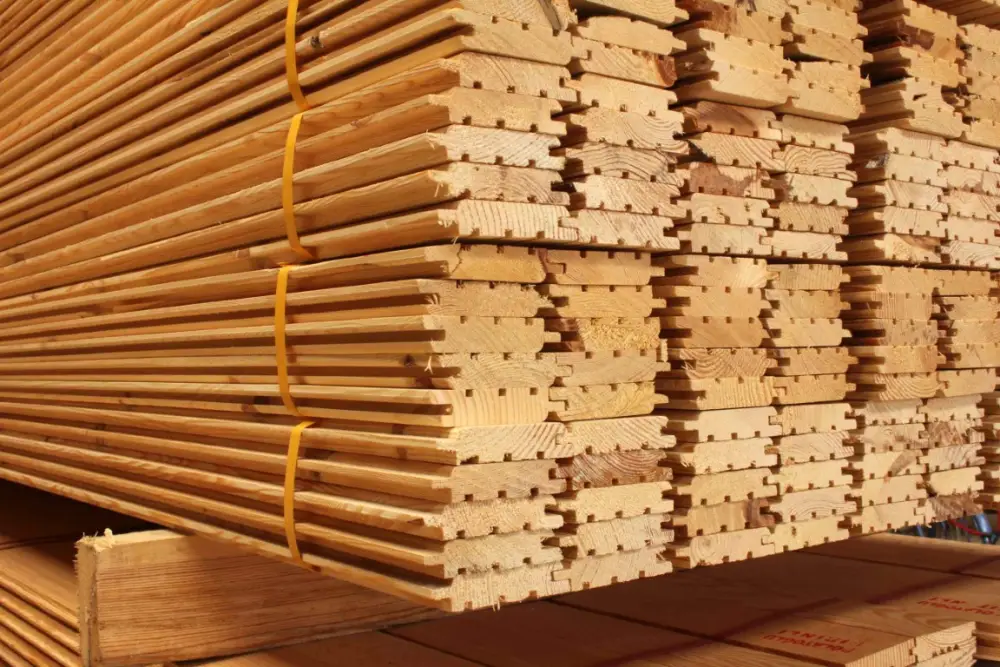Lumber Prices Are Collapsing: A Fresh Warning Sign for the U.S. Economy
Editor WoodBusinessPortal.com team - research, 2025 - September, 17
Recent sharp drops in U.S. lumber prices are triggering concern among economists and industry players alike. Because lumber is closely tied to construction activity, mortgage rates, and housing demand, its price movements often act as early indicators of broader economic stress. Understanding these dynamics is vital for professionals in logging, milling, wood products manufacturing, and distribution. WoodBusinessPortal.com provides updated data, trend analysis, and strategic insight to navigate this volatility.
Current Situation & Key Statistics.
Price Drop: Since early August 2025, U.S. lumber futures have fallen roughly 24-25 %, from three-year highs. Prices dropped from above $695.50 per thousand board feet on August 1 to around $526-$535 in early September.
Output Reductions: Major producers such as Interfor and Domtar have begun cutting lumber production in response to oversupply and weakening demand. Mills are reducing output, scheduling maintenance downtime, or pausing some production.
Weak Housing Indicators: Permits for new residential construction, and housing starts, are underperforming expectations. Builders’ sentiment is subdued. The high interest rates are suppressing demand for home purchases and new builds.
Oversupply: Many mills had stocked up on lumber in advance of possible tariff increases (especially fears around lumber imports). That speculative buildup in inventory has outlasted the spike in demand, contributing to the supply glut.
Tariff & Trade Uncertainty: Tariff threats and actual regulatory measures have distorted supply chains. Buyers anticipating higher import costs had ordered or hoarded lumber; the reality of demand hasn’t matched those expectations.
High Interest Rates & Cost of Capital: Mortgage interest rates remain elevated. This reduces affordability of new homes, dampens demand for lumber-intensive construction, and increases the cost of borrowing for developers.
Implications & Predictions for the Wood Industry.
Lumber as Leading Economic Indicator: Historically, sudden lumber price drops have preceded declines in housing and construction sectors, which themselves are major contributors to GDP. Industry professionals should monitor lumber futures, building permits, and starts as early warning signals.
Production Adjustments: Further curtailments in production are likely. Mills that are less efficient or with higher costs may be the first to reduce operations or shut down temporarily. Inventory management will become more critical.
Recovery Timing: Some analysts suggest that prices may only begin to recover in 2026, particularly if interest rates drop and demand in multifamily housing or renovation segments strengthens. Without demand improvement, price stabilization may lag.
Opportunities: For buyers and builders, lower lumber costs can mean lower input costs in the short term. Also, the drop in raw lumber prices could favor engineered wood / mass timber sectors if stable supply and predictable pricing returns. However, volatility remains a risk.
Risks and Watchpoints.
Further Demand Weakness: If housing starts, permits, or renovation activity continue to decline, lumber demand might remain weak for an extended period.
Cost Pressures Elsewhere: Lower lumber prices help, but other input costs (labor, freight, energy) and regulation (environmental compliance, tariffs) may offset some margin gains.
Policy & Interest Rate Shifts: Any unexpected moves in monetary policy, or changes in building regulation or trade policy could quickly change the landscape (either triggering a rebound or depressing demand further).
How WoodBusinessPortal.com Can Help Professionals. Realtime Price Tracking & Futures Data: To anticipate market shifts, delay or accelerate orders, hedge exposure.
Import/Export Flow Statistics: Knowing sources of lumber (domestic vs imported) and where supply bottlenecks are – especially with trade/tariff dynamics.
Trend Forecasting: Analytics on housing starts, building permits, interest rate projections, and how these tie to lumber demand.
Networking & Strategic Partners: Connecting mills, distributors, builders, and specifiers who need reliable supply or are exploring alternatives (engineered wood, mass timber).
The collapse in lumber prices represents more than just a cost relief for some — it may be a wake-up call. For professionals in the wood industry, current trends suggest caution: oversupply, weak housing demand, high capital costs all weigh on near-term prospects. But there are also opportunities for those who can adapt quickly, control costs, and anticipate demand cycles. WoodBusinessPortal.com is positioned to be a valuable resource in these uncertain times, providing market intelligence, connections, and strategic insight.
Sources:
1. propmodo.com
2. wsj.com
3. marketwatch.com
